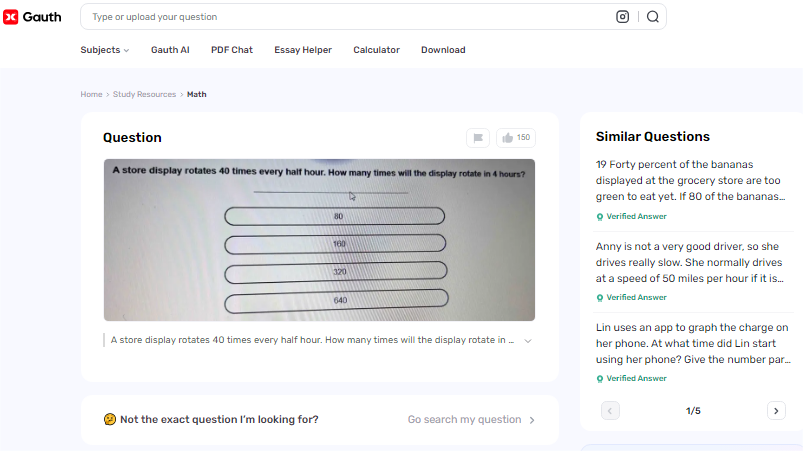Fractions and ratios are the first steps to mathematical learning and cognizance, which is essential for all academic courses and practical life. These concepts are used in day-to-day activities to portion ingredients for cooking and money to invest, among other uses. Gauth AI intervenes as a rescuer, providing information and strategies to solve simple and complicated mathematical problems in real-time.
Introduction
Ratios and proportions, the former as expressions of the relationship between two quantities, the latter as equations stating that two ratios are equal, are indispensable in many fields. Understanding these concepts helps in problem-solving and analytical argumentation, so they are helpful in academic work and practice.
Gauth AI is solution-focused, where concepts are not simply preached but practically implemented. It gives the right answers to complicated numeric concepts.
Understanding Ratios
Ratios are basic in meaning, allowing us to compare measurements and state relations. For instance, the ratio of boys to girls in a class can be 2:3, meaning that per three girls, there are two boys. Ratios exist in all aspects of life, from baking a cake, where the proportionality of ingredients is important, to the finance ratio in business.
Gauth AI provides a solution to make ratios easier to handle. Inputting ratios presents solutions straight, which improves understanding and the ability to deal with mathematical problems.
Exploring Proportions
Fractions take the concept of ratios to another level by equating two ratios. They are widely employed in scaling, pricing, and many other uses. For instance, if the recipe requires 2 cups of flour for every 3 sugar cups, sticking to this ratio keeps the texture and taste of the recipe consistent. With Gauth AI, users learn about the concepts of ratios and proportions.
Stepwise Process on Using Gauth AI For Calculating Ratios and Proportions
Enter the Query:
Type the text or the concept concerning ratios or proportions that you wish Gauth AI to work on. This can be as text or an image. For images, all that you have to do is either click and drag the pictures to the area provided or use the browser navigator.
Wait for Processing:
Natural Language Processing and Machine Learning are used to process your input, extracting themes, nouns, expressions, symbols, and related theories about ratios and proportions.
Get Your Answer:
Upon parsing, Gauth AI offers a comprehensive explanation of each query through paraphrasing, clarification, symbolic representation, and background information that will assist you in fully understanding ratios and proportions.
Practical Applications and Benefits
In addition to their theoretical aspect, ratios and proportions have essential practical applications in various branches. Understanding these concepts improves decision-making and problem-solving skills across sectors, including architectural and financial. To reinforce this learning, Gauth AI provides contextual examples and makes learning paths more customizable.
Also, interacting with Gauth AI frequently helps create a culture of consistent learning and skill enhancement. Its learning capabilities enable learners to progress at their own pace, thus meeting their expectations and goals.
Proven Example Solution
Question
Consider this question: a store display rotates 40 times every half hour. how many times will the display rotate in 4 hours?. See the below image of how Guath AI helped you solve this question:
Gauth AI Answer
The display will rotate
40×8=320, 40×8=320 times in 4 hours. Therefore, the correct answer is:
320320320
Explanation
To solve this question, we need to calculate the total number of rotations the store display makes in 4 hours, given the rate of rotation.

Step 1: Understand the given rate of rotation. The store display rotates 40 times every half-hour
Step 2: Find out how many half an hour parts exist when one has four hours. There are two half-an-hour segments in an hour, so 4 hours means there are 2×4=8 2×4=8 half-an-hour segments in four hours.
Step 3: Add the number of rotations per half-hour to the total number of rotations by dividing 4 by half an hour to determine the total number of segments
Conclusion
Overall, proportions and ratios are essential in both daily and academic practice. Understanding these concepts not only helps improve math skills but also develops the ability to think critically and analyze things. Gauth AI acts as a friend on this path of learning, providing instant answers and allowing users to overcome any challenges that mathematics may pose. Come to Gauth AI today and start the way to mathematical enlightenment and academic achievement.


